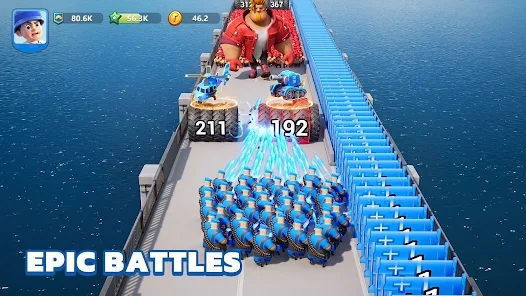Unlocking Learning: How Creative Educational Games Enhance Student Engagement
In an age where attention spans are waning and distractions are at an all-time high, the realm of education faces unprecedented challenges. This has stirred a revolution in how we teach, bringing us to an intriguing intersection between gaming and learning. Can we unlock the potential of students through creative games? The answer is a resounding yes!
The Evolution of Educational Games
Educational games have come a long way from mere flashcards and board games. With technological advancements, the rise of game iPad story puzzles has transformed the educational landscape. But why are creative games effective? Let's dissect this phenomenon.
Understanding the Power of Creative Games
- **Engagement**: Games require active participation, thus keeping students involved.
- **Problem-Solving Skills**: Puzzles and challenges foster critical thinking.
- **Collaboration**: Many games encourage teamwork, enhancing social skills.
How Do Games Enhance Engagement?
Think about it. When was the last time you learned something new while having fun? Creative educational games tap into the fun factor, making learning feel less like a chore and more like a rewarding experience. Let’s dig deeper into how these games can enhance student engagement.
Interactivity: The Game Changer
Interactivity is one of those magical aspects of educational games. They engage multiple senses and demand physical and cognitive involvement. This transforms the learning experience into an engaging adventure rather than a mundane task. Consider this:
| Traditional Learning | Educational Games |
|---|---|
| Passive Reception | Active Participation |
| Static Content | Dynamic Challenges |
| Linear Progression | Branching Paths |
Types of Creative Educational Games
What kinds of games do we have in this delightful realm? Here is a succinct list for your perusal:
- Puzzle Games: These stimulate critical thinking and problem-solving.
- Story-Based Games: These enhance literacy by immersing students in narratives.
- Simulation Games: These provide real-world skills in a virtual setting.
- Cooperative Games: These develop teamwork and collaboration.
Gamification in Education: Not Just for Fun
Gamification isn’t merely sticking badges on homework. It’s a strategy that uses game design elements in non-game contexts. It’s no surprise that this concept has infiltrated modern educational practices. Here’s what it achieves:
- Motivation: Students are motivated by the desire to win, progress, or achieve milestones.
- Feedback: Instant feedback is a game feature, allowing for timely correction.
- Personalization: Games can adapt to cater to different learning paces, enhancing individual experiences.
Case Studies: Creative Games in Action
Let’s look at a couple of examples where creative educational games have made waves in the classroom.
Example 1: Math Adventure
In a Dominican republic high school, a math adventure game was introduced. Students could solve problems to progress in a story. The result? Engagement skyrocketed by over 40%! Teachers reported remarkable improvements in students’ problem-solving skills.
Example 2: Language Learning Castle
This interactive platform combined vocabulary puzzles with medieval-themed gameplay. Students reported they learned new words almost effortlessly. Additionally, they had so much fun, they’d play outside of class, further enhancing their language skills.
The Role of Technology
No discussion on creative games would be complete without mentioning the role of technology. The rise of mobile devices has made games accessible almost anywhere! Who would have thought that a simple iPad could be a portal to worlds of knowledge?
Potential Challenges
Of course, it’s essential to recognize that transitioning to creative educational games isn't without its hurdles. Here are some challenges faced:
- **Access to Technology**: Not all students have equal access to devices.
- **Teacher Training**: Not all educators are trained to integrate these tools effectively.
- **Balance Between Fun and Learning**: Ensuring focus remains on educational outcomes can be tricky.
Best Practices for Integrating Creative Games
Ready to implement creative games in your teaching? Here are some best practices:
- Set Clear Learning Objectives: Define what you want to achieve.
- Choose the Right Game: Select games that align with your curriculum.
- Encourage Reflection: After gameplay, have students discuss what they learned.
Conclusion: Unlocking Learning Through Play
The world of education is undeniably transforming with the integration of creative educational games. By facilitating engagement and fostering a love for lifelong learning, these games prove that play and education are not opposing forces. Instead, they are willing partners on the journey of knowledge discovery. So, whether it’s through game iPad story puzzles or interactive simulations—embracing creativity in education is the key to unlocking the potential in every student.



